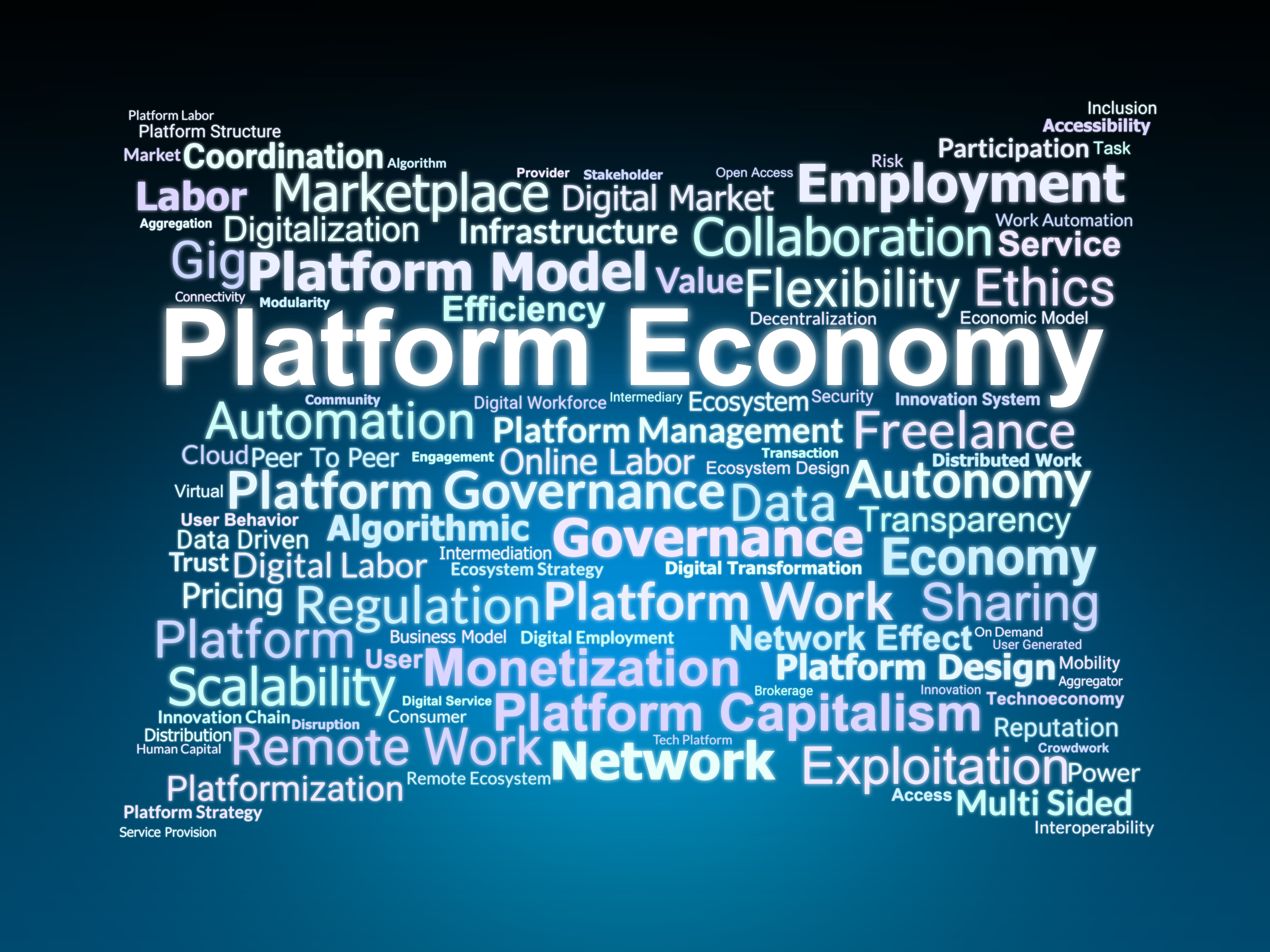Five tech sector winners from COVID-19
by Inline Policy on 30 Apr 2020
The tech sector, as all other sectors of the economy, has been heavily impacted by the COVID-19 crisis, but not necessarily in a negative way. The pandemic could in fact represent an opportunity for five key tech sub-sectors to innovate their business models and show policy makers the potential of new technologies for good during (and beyond) global crises.
Many are the disruptions brought about by the COVID-19 crisis in our lives. Businesses and citizens have been asked to transform their daily routines and, in some cases, even reinvent their regular work to contribute to solving the crisis. The tech sector is not immune to these disruptions either. Ever since the virus took hold, tech companies of all kinds have been revisiting their activities and actively engaging to try to find ways to ease the effects of the crisis, whether by starting to produce ventilators or by making sure their websites and platforms do not congest the internet.
At the same time, both national authorities and European institutions have been using the expertise of tech companies to, among other things, collect data, stop the dissemination of online disinformation, and track the spread of the virus. This has somewhat contributed to bringing these businesses – and the sector – once again to the forefront of European policymaking, only this time not just as objects of new regulation. In this context, it is no secret that the tech sector is set to gain the most from the coronavirus crisis, and not just in terms of an increase in usage. COVID-19 could in fact also cause some more structural rethinking on the role of tech in European public policy, as well as bring about new business opportunities for a number of tech subsectors.
This piece discusses five key tech-subsectors that are likely to benefit the most – both passively and actively – from COVID-19.
1. Health tech
As an emerging discipline that combines big data analysis and AI with methods from biology, medicine and statistics to understand and predict the spread of a virus, digital epidemiology, a health tech development, has seen an unprecedented number of new applications in recent months. For instance, the Boston Children’s Hospital has just developed HealthMap, a new digital system (map) to help epidemiologists identify early signs of an outbreak. On the other side of the Atlantic, an Austrian team of researchers in Linz has developed an AI system that scans databases with hundreds of millions of molecules to identify those that could harm – if not destroy – the coronavirus.
Regulation on privacy and data protection, personal autonomy and transparency has held back these health tech disciplines since long before the COVID-19 crisis, including through regulatory loopholes on issues such as medical liability. In addition to such consumer-driven concerns, traditional regulation and assessment mechanisms for health have often been out of step with ongoing evolutions in these technologies – thus hindering, or at least slowing down, their evolution.
When looking at the evident benefits that health technologies (including telehealth) have had in the Covid-19 crisis and other similar scenarios, today’s outbreak could act as an eye opener. It could provide the right impetus for EU policymakers and regulatory agencies to relax too-strict regulatory and technology requirements and address those missing legislative loopholes that prevent health tech from flourishing.
2. Autonomous vehicles - drones
Drones have been another protagonist of governments’ responses to the COVID-19 crisis. Used to spray disinfectants and pesticides, or to transport both medical samples and normal deliveries, they help to significantly reduce human contact, speed up the process, and perhaps even be more efficient.
Risks of (undeclared) surveillance, noise, environmental concerns and unintended crashes are among the challenges of autonomous vehicles – including but not limited to drones – that remain to be addressed by policymakers. Nonetheless, the clear benefit of such technologies in crisis-like situations may give a much-needed push to accelerate the introduction of more complex operations. In the long term, the drone flights undertaken in these few months might well become an example of how private and public authorities start to fully embrace this emerging technology – in times of crisis and beyond.
3. Delivery and mobility platforms
Gig economy platforms such as Uber and Deliveroo have often been at the forefront of Europe’s regulatory debates over the past few years, especially in terms of their business model and categorisation of workers. While discussions on the issue at national levels seem to be ongoing – see ride hailing drivers in California – a number of these platforms have undoubtedly stepped up their business models in order to face the pandemic, whether by expanding their services or offering a higher level of social protection to workers. Uber and its new peer-to-peer delivery service, Uber Connect, is but one of many examples.
It is true that many of these initiatives were driven by companies’ survival instincts, given the plummeting demands for ride sharing and other traditional services, and that in many instances it might not be enough to address workers’ needs and demands. At the same time, COVID-19 might just be the right opportunity for them to become the multi-service platform they (or at least some of them) have always aspired to be – if done intelligently.
Moreover, the crisis could be the opportunity for them to show national authorities that, with the right set of guidelines, they could indeed provide an adequate level of social protection to their workers – without necessarily classifying them as employees.
4. Immersive tech
Among the regulatory challenges traditionally faced by immersive technologies are content regulation, including health and safety concerns, data management and protection, and questions around the protection of IP rights and liability obligations. While these issues are likely to remain the subject of future legislative proposals, the COVID-19 crisis might help regulators see these technologies under a different light.
Immersive tech applications have not only been people’s best friends when it comes to playing video games in quarantine, but have also been actively helping health sectors across the world. Immersive Healthcare Technologies have for instance helped to plan and accelerate hospital construction in China, create and share training content for doctors and nurses, simulate emergency medical situations, and virtually oversee the manufacturing process of ventilators. AR technologies have also provided alternatives to activities which are not permitted in lockdown situations, such as mall shopping.
5. Fintech
The spike in contactless and mobile payments, branchless banking and crowdfunding platforms are some examples of how the COVID-19 crisis has impacted the fintech sector. The same could be said for the opposite: a number of financial companies and start-ups have been rolling out new tools and/or open banking technologies to support self-employed workers, sell vouchers to customers, and provide supplementary credit cards to give friends and family to use on people’s behalf while isolating.
The fintech sector has long been subject to regulatory hurdles due to its embedded data protection and privacy risks, not to mention cybercrime and the many other issues related to money management and transfers. The increase in demand for digital banking solutions resulting from the COVID-19 crisis could however represent the necessary boost to fintech solutions and to governments to encourage more fintech partnerships. For instance, both China and South Korea have already started to look to ease rules on the use of this type of technology.
COVID-19 and EU policy making
These are but five of many tech sub-sectors that have the potential to emerge as winners from this crisis. Covid-19, as the first major epidemic of our century, represents a real opportunity for those five industries to not only revise and innovate their business models, but also make them more tailored to the needs of consumers, workers and public authorities.
At the same time, it represents a chance for (European) policy makers to recognise better the potential of new technologies in global crises like today’s, whether to provide critical information and reliable data, to model and track diseases, to deliver goods or just to allow people in quarantine to conduct a semi-normal life.
Ultimately, all of this will feed into the work that the European Commission is doing through its digital strategies. Looking at the five examples provided, a re-adaptation of the proposed data strategy, AI white paper and other digital regulations (i.e. the Digital Services Act) might be the best way to reflect these changes and opportunities – whether it is by pooling health data or revising the way “high-risk” AI applications are categorised.
Topics: Gig economy, Artificial Intelligence (AI), Innovation policy, Immersive Tech, Fintech, Technology






Comments